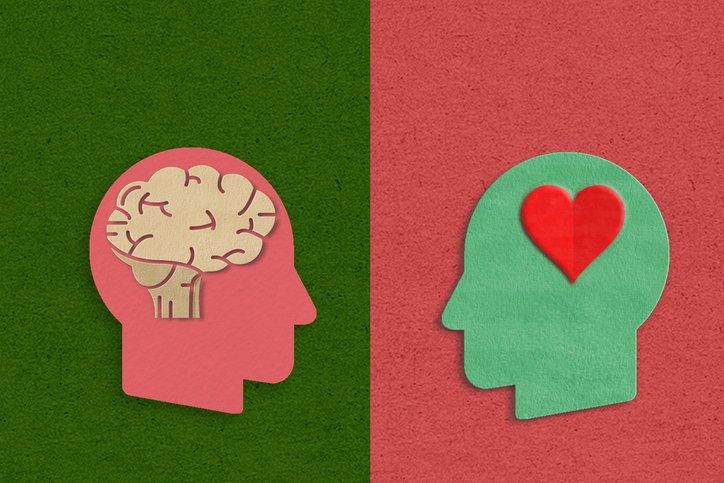
I define The Kaleidoscope Effect as “the skewed view of perspective created by the act of imposing one’s Lens over that of another, without regard to their own lens, and with the intent to educate.” When we dissect this definition further, a few things stand out:
- First, for me, is the word Lens. We use a lens to depict our perspective when engaging in The Kaleidoscope Effect. Perspective is a massive topic to discuss, but it is interwoven with much of the necessary work in this space.
- Second, the act of imposing sets the domineering tone for the definition, and moreover for the underlying crisis plaguing many social interactions, today and going back centuries.
- Lastly, intent holds strong to the core of work surrounding The Kaleidoscope Effect. Inherently, intent, or even perceived intent, pushes someone or something in a specific direction, whether positively or negatively.
As we move forward through this work together, it is imperative to break things down in ways that are both manageable and meaningful. Today, we’ll start with the ever-arduous topic of perspective. I can sometimes be more fascinated with how something works rather than what the result may be. In this case, this may be the perfect place to start in trying to Decipher Our Own Lens.
Modern science has more insights into the inner workings of our brains than ever — and how mental processes, alongside consciousness, truly construct the reality around us, as we see it! Let’s think about that last part of statement for a moment together:
The statement, “as We see it,” depicts the true reality of our perception; it is just that, our own. As mentioned previously, our Lenses are unique to us, and are crafted over years of our own lived experiences. These lived experiences differ from any other person, no matter how similar a background they may have. For some of us, we’ve lived with our perceptions for years — decades even — and over this time, our perception hasn’t just shifted or even grown, it has rooted deeper in nuance and cognitive bias.
Let’s envision a scenario to illustrate: You and another individual (details about them don’t at all matter for the moment) observe a car accident. In recollecting what happened, you find your stories and experiences differ, even slightly. The natural response we all have to such situations pushes us to feel that our lived experience is clearly what “really” happened and that the other perspective must be wrong in some way; this has been termed “naïve realism.“
UCLA Psychology Professor Matthew Lieberman, Ph.D., has brought forward new research that with it, may provide an explanation as to why it is so difficult for many of us to accept and understand the perspective of others, especially when it differs from our own. Lieberman states that naïve realism is the biggest driver of conflict and distrust among people. A section of our brain known as the gestalt cortex, which sits behind our ear and in between the spaces of our brain responsible for processing most of our senses, in part aids us in making sense of situations where there is ambiguity or incomplete information — as well as in dismissing alternative interpretations.
Wait a minute, we just stated that our brains make decisions with incomplete information? And we’ve been OK with that? That just doesn’t feel right, does it? This is known as top-down processing, which for most of us is the natural process our brain uses in milliseconds when processing our surroundings. This process uses our Lens (built from past lived experiences) to fill in the blanks and make assumptions using these years of built biases to decipher what we are looking at through our Lens at any given moment. This process of perception can be broken down further into these phases:
- Environmental Stimulation: This could be considered our brain’s natural state. This is the processing of any and all stimuli within our environment at any given moment.
- Attended Stimulation: At this point, our brains have homed in on something specific, and our attention is now focused on it.
- Sensory Stimulation: This step differs depending on what senses are being stimulated, but this is the step where our brain begins to transcribe what the sensation is. Vision as an example: This is the stage where light would pass through our retina, and using this light, it works with the cornea and lens to begin to form an image.
- Neural Processing: This is the step where the stimulus is being sent through neural pathways, including the gestalt cortex.
- Interpretation: At this stage, our brains have begun to attempt to decipher what the stimulus is. This is the earliest stage where our biases are entered into the equation. Our brains have done all of these steps in milliseconds and thus, do not have time to sit back and wait to make a truly informed decision. Rather, it has begun filling in the blanks and making presumptions.
- Recognition: This stage can also be referred to as Perception. We now consciously perceive the stimulus and have also fully built in our own interpretations and preconceived notions.
- Action: At this point, our motor activity kicks in, and we take action of some sort. This could be as small as a blink of an eye or jumping out of the way of a fast-moving bus.
Let’s go through an exercise together. I’d like for us to think of some scenarios such as us observing a hooded figure in a dark alleyway, or a friendly person running towards us in a crowded area. Our brains have already determined what is happening before we can even blink. The gaps of not knowing don’t matter; we have already assumed what we believe is happening and have employed cognitive bias to help us piece it together. What is going through your mind in thinking of these two scenarios?
Turns out that the hooded figure was an elderly person in a sweater walking home on a cold night. And that friendly person heading your way? You didn’t see the person standing right behind you, who they were actually running towards.
Interestingly, every single day there are countless opportunities to challenge our way of thinking, but we struggle to project that onto scenarios where the stakes are high.
The first step to truly accepting and even adopting the perspectives of others (the widening of our lens) is to begin by Deciphering Our Own Lens and in doing so, finding opportunities to rewire the steps in our processing that are leading to biased assumptions and decisions. In sharing the following recommendations to aid us in starting this difficult work, I invite each of you take to an active approach to implementing these steps and monitoring the impact on both your perspectives and, more so, on your mental health as a result:
- Acknowledge the status quo: We live in a world that is not equitable and have spent years, decades even, building up our perspectives based on potentially biased lived experiences we’ve had. It’s OK to admit, even if just in the privacy of our own minds for now, that we could be looking through a biased Lens. Being self-aware isn’t just a sign of strong emotional intelligence, without being so we will never truly be curious, and our Lens may never widen. This stage will be the hardest for most of us so here are some small ways I’ve begun working through this myself:
- Take a daily inventory of when your perspective may be wrong or biased. Things like an assumptive thought of what kind of person is driving the car next to you, how you thought something was going to taste or smell, or even what you believe you know about a friend or colleague. Taking this inventory will start helping us to be comfortable challenging our perception during those high-stakes moments.
- Try and account for what/why you think what you thought. It was a big roaring truck that person was driving, so the driver must be … and so on. This acknowledgment will help to start rewiring our perspective.
- Now you can truly get curious. If time allows, observe even deeper. Look for cues that might have helped you perceive differently and work to make new assumptions. This may start to train our brains to observe more and challenge the biases that come forward. I use the notes app on my phone when working through this on the go, and I especially try to deploy this approach during difficult discussions.
- Make this part of your vision for yourself: Say it with me y’all: “It’s OK for my perspective to change!” Think about where we would be as a human race or as a country if people didn’t exercise the right to change their perspective. We have been taught (another hardwired bias) that this makes us appear to lack resolve or strength of character, but let’s be honest, the biggest show of lack of character is an unwillingness to grow, which goes hand in hand with a singular perspective. And in those moments where you feel your perspective shifting, recognize it, share with the group, give yourself a clap, and celebrate that you are accomplishing one of the most difficult things we will face as conscious humans.
- Knowing this now, allow yourself to acknowledge that others may be right: Especially in those difficult social interactions, allow your guard to drop and become aware of how your biased Lens has caused you to assume. Reevaluate your perspective and get ready to observe deeper.
- Get courageous about curiosity: Take the novel approach and attempt to learn both sides of the situation. Lean in with the intent to understand, not with the intent to disprove (reflecting back on our definition of The Kaleidoscope Effect, this is where we impose our Lens on others or have others’ Lenses imposed over our own). Taking in and wholly understanding an alternative perspective doesn’t always mean ours will change — it may root us even further in what we believe about the situation. Be open to it!
- Fact find: When listening wholly and attempting to understand, observe and identify only the facts. Remember, the other individual is on their own journey with their perspective, and they may be projecting solely their experience. Exaggerations like “always,” “never,” “nobody,” and “everybody,” are projections of their bias. Try and focus on how they might feel over how they explained it.
- Acknowledge and share common ground: Acknowledging and thanking a person for their willingness to be vulnerable with you is powerful — this shouldn’t be taken for granted. Moreover, if you are engaged in this work actively, they are helping you grow in ways they may never know or understand, so thank them for that! Using the safer space you’ve cultivated and the facts you have found, you can now find the thread that connects you together and can use this as a foundation to build upon.
It’s important to note that this is not idle work. It’s like working any other muscle in our body, it takes repetition and consistency to build any strength, and this will likely be the hardest muscle you’ll ever attempt to train in your life. Extend yourself and others grace and use this grace as the place where we start to allow for the Widening of Our Lens.


















